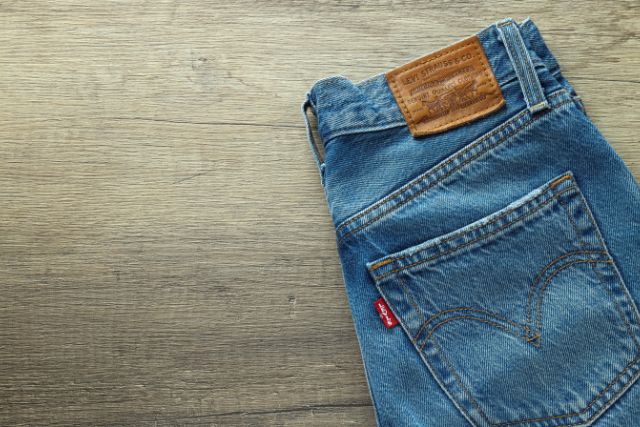Selvedge denim, often dubbed as the pinnacle of denim craftsmanship, has garnered a cult following among fashion enthusiasts and denim aficionados worldwide. The selvedge refers to the self-finished edge of the fabric that prevents it from unraveling, and this simple detail sets it apart from regular denim. But what makes selvedge denim better? In this comprehensive article, we delve into the intricacies of selvedge denim, exploring why it’s considered superior in quality, craftsmanship, and durability. We’ll also address the burning questions surrounding this iconic fabric: Is selvedge denim better quality? Why is selvedge denim more expensive? Do selvedge jeans last longer? What is the best denim fabric?
Is Selvedge Denim Better Quality?
Without a doubt, selvedge denim is synonymous with superior quality. The quality of selvedge denim is often considered higher than non-selvedge denim due to several key factors:
- Craftsmanship: Selvedge denim is the name for the higher-quality, harder-to-produce type of denim that is typically sold and worn unwashed. The production process itself is signified by its slower production speed and lower output. Selvage denim, at least the ones used by reputable brands, relies on vintage weaving looms that date back at least 70 years. These vintage looms are operated by skilled artisans who meticulously create each yard of fabric, resulting in a level of craftsmanship that is unmatched by mass-produced denim.
- Tighter Weave: Clothing made from “selvage” fabric is known to last longer because it’s produced on a shuttle loom, which creates a tighter weave than the modern looms used for mass-manufactured denim. This tight weave not only enhances the fabric’s durability why denim is so strong, but also contributes to its unique texture and character. Selvedge denim aficionados appreciate the distinct feel and appearance that comes from this tighter weave.
- Uniqueness: Selvedge denim is often celebrated for its uniqueness. The self-finished edge, marked by the colored thread running along the fabric’s edge, serves as a testament to the fabric’s authenticity. Each pair of selvedge denim jeans tells a story through its unique selvage ID, making it a one-of-a-kind piece of clothing.
Why Is Selvedge Denim More Expensive?
The simple answer to why selvedge denim is more expensive is that it requires craftsmanship and a meticulous production process. Here’s a closer look at the factors contributing to its higher price tag:
- Vintage Weaving Looms: As mentioned earlier, selvedge denim is woven on vintage shuttle looms that are decades old. These looms are rare and require expert maintenance, making them more costly to operate than modern, high-speed looms used in mass production. The use of vintage looms is a deliberate choice to maintain the fabric’s authenticity and quality.
- Slower Production Speed: Shuttle looms are inherently slower than modern looms, which means the production process for selvedge denim is time-consuming. This slower speed allows for greater attention to detail and precision, resulting in a fabric that is both unique and durable.
- Limited Output: Due to the slower production speed and the scarcity of vintage shuttle looms, selvedge denim is produced in smaller quantities compared to mass-produced denim. This limited output makes each yard of selvedge denim more exclusive and sought after by denim connoisseurs.
Do Selvedge Jeans Last Longer?
Selvedge jeans have a well-deserved reputation for lasting longer than their mass-produced counterparts. The durability of selvedge denim can be attributed to several factors:
- Tighter Weave: As previously mentioned, the tighter weave created by shuttle looms contributes significantly to the durability of selvedge denim. This tight weave prevents the fabric from easily fraying or wearing out, ensuring that your selvedge jeans can withstand years of wear and tear.
- Quality Materials: Selvedge denim is often made from high-quality cotton that is carefully selected for its strength and longevity. The combination of premium materials and skilled craftsmanship results in a fabric that can withstand the rigors of daily life.
- Unique Aging: Selvedge denim also has the advantage of aging gracefully. With time and wear, selvedge jeans develop unique fades and creases that tell the story of your experiences while wearing them. This distinctive aging process adds character to the fabric and contributes to its longevity.
Should I Wash Selvedge Denim?
The care and maintenance of selvedge denim are crucial to preserving its unique qualities and longevity. While selvedge denim can be machine-washed according to the care tag, many denim enthusiasts prefer a more delicate approach to washing:
Hand Washing: To retain more of that coveted indigo color and to minimize wear and tear, it’s recommended to hand wash selvedge denim in lukewarm water with a gentle cleaner. This method helps prevent excessive fading and maintains the fabric’s integrity.
- Limited Washing: Selvedge denim should not be washed as frequently as regular jeans. Overwashing can cause the indigo dye to fade quickly and may lead to premature wear. Instead, spot clean stains when necessary and only wash your selvedge jeans when they truly need it.
Conclusion
In summary, selvedge denim is better in terms of quality, craftsmanship, and durability due to its meticulous production process, vintage weaving looms, tighter weave, and unique characteristics. While selvedge denim may come with a higher price tag, it offers a level of authenticity and longevity that is unmatched by mass-produced denim. With proper care and maintenance, selvedge jeans can be a lasting and cherished addition to your wardrobe, aging gracefully and telling your unique story with every wear. So, whether you’re a denim enthusiast or simply appreciate high-quality clothing, selvedge denim is undoubtedly worth the investment.

Leave a Reply